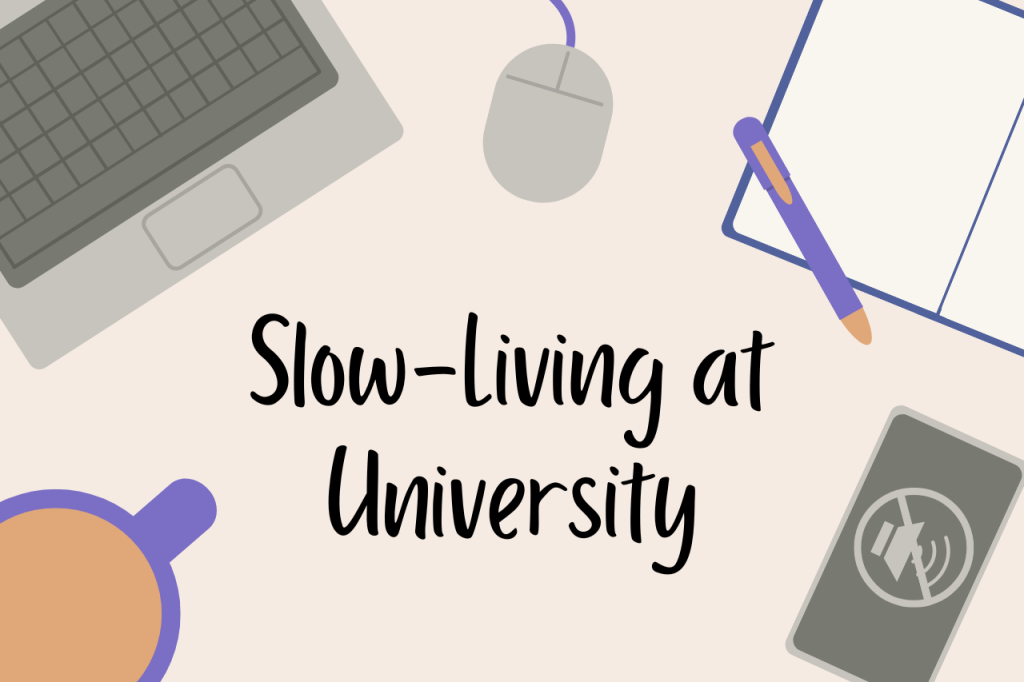Designed by Emma Tracy
University students are under immense pressure to not only do well in their degree, but also build up their CVs with work experience, take part in extra-curriculars, and make the most of university life. Trying to keep on top of everything can be stressful, and can often lead to burnout if we aren’t careful. To prevent this, we can integrate slow-living practices into our daily lives as students, without hindering the progress in our degrees.
What is Slow-Living?
Slow-living emerged as a response to the fast-paced and hyper-productive lives we’ve been encouraged to live. Research into slow-living has shown that it has many benefits on everyday life, especially for students. Slow-living involves taking a step-back from constant productivity in order to give your brain a break from over-stimulation. This can be achieved by incorporating healthy habits into everyday life or reducing time spent on activities that cause stress or burnout.
Why is Slow-living Necessary?
While it is important to keep on top of your workload and make the most of the various opportunities, events, and clubs at university, sometimes you have to slow down. Slow-living is not about saying no to everything that comes your way, or only doing the bare minimum in your work to pass. For university students, it is about prioritising your wellbeing and working towards your goals in a manageable way that prevents burnout. This does not mean that you are lazy, it just means that you are slowing down, pacing yourself, and also appreciating the world around you.
How Does Slow-living Benefit Students?
Setting aside time in your busy schedule to slow down and practice slow-living habits can be extremely beneficial, especially for students. Some general tips for slow-living are listed below:
- Practicing mindfulness.
- Journaling about your day, what you did, and anything that’s been on your mind.
- Replacing doom-scrolling on your phone with low effort, offline hobbies.
- Trying some low intensity training related to your sport/gym routine, like stretching, or yoga.
Adding slow-living practices has helped me a lot. Being a student with ADHD, I have to pay attention to when I get overstimulated or close to burnout. Whilst ADHD does manifest differently for different people, I want to share the slow-living practices I do that really help me.
Creating Lists and Calendars:
- Make a list of important deadlines and display it where you will constantly see it. This way, you can plan ahead and not lose track of time leading up to these deadlines.
Hobbies (Input versus Output):
- Remember, it is important to aim for consistency, not perfection. It is always good to be ambitious, but constantly aiming to be perfect all of the time will just drain you. Focus on having ‘bare minimum’ days when possible, where you focus on basic tasks like eating meals, drinking water and trying to simply move your body, when hardcore exercise feels like too much.
Even if you can’t practice slow-living as often as you want, incorporating at least some of these practices in your everyday life will positively contribute towards your mental wellbeing and takes small steps to prevent burnout.
Written by Emma Tracy
Edited by Sophia Tilbury


